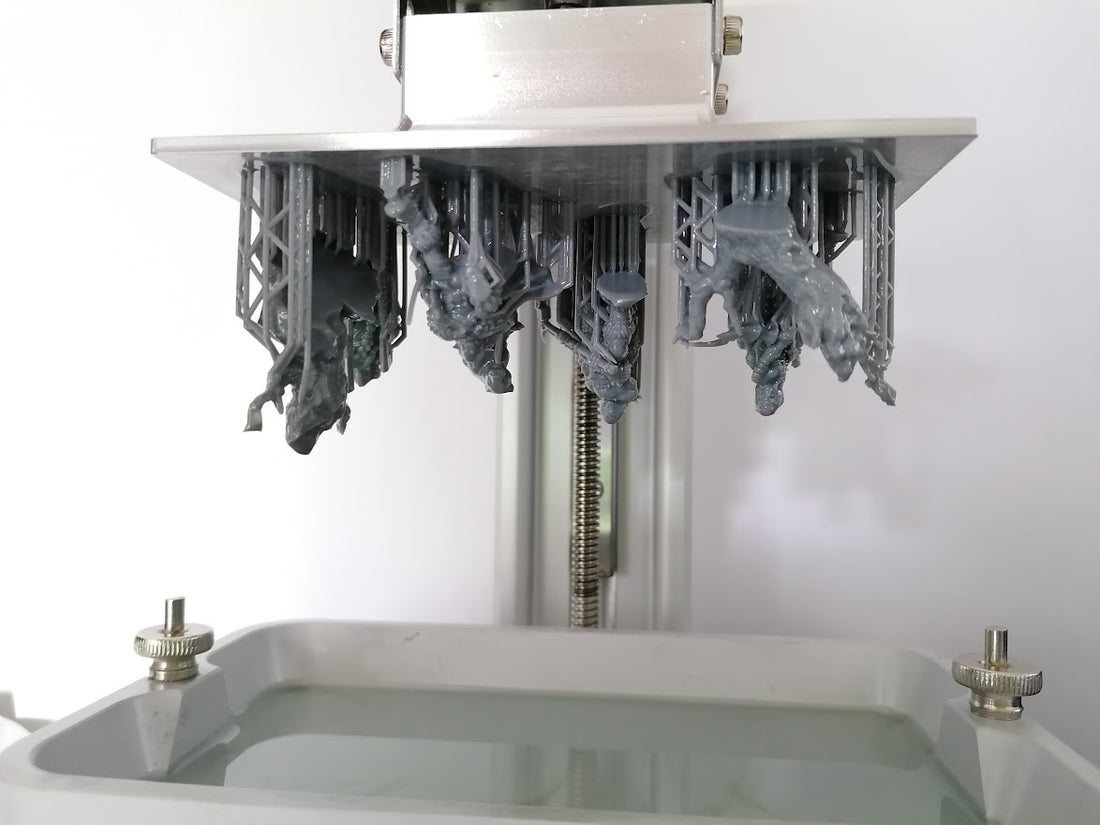OK, so you may have been thinking about getting a 3d Printer for printing miniatures, but there are so many things to think about and so much choice on the market. It can be expensive to get Here are some tips for you to help keep the costs down when you first start out!
As you go through the list you'll see some hyperlinks in the descriptions of the items - these will take you to the Amazon UK website and are affiliate links for products I use myself and will vouch for! If you buy them through these links you'll be helping me out as I get paid by Amazon for affiliate sales.
Just as a caveat, you can obviously print miniatures on FDM printers, however the quality of them is far below the standards of any commercially available miniatures. If you want to get the best out of our STL files you'll want to use resin - it's what we use and it's what we'll be covering here.
When I first started 3D printing back in 2015 there wasn't lots of flashy gadgets and equipment available to us all, and as I started with this setup I've basically continued with the same arrangement, albeit with some alterations!
So....What equipment do I need to get started?
In no particular order:
1 a 3D printer - we'll cover this a bit further down.
2 some airtight tupperware containers (cliplock style) to hold your cleaning medium (I use a 3 stage wash method with 3 containers, but you could do just 2. the kind with the basket like the picture below are ideal as the basket makes retrieval of the models much easier, but you can use any type of container. I've found the cheaper ones aren't always entirely watertight and can result in some spillages when transporting the containers, so its a good idea not to be too skimpy with these!
3 disposable gloves - Nitrile or Neoprene gloves - NO LATEX! thats not accounting for those with latex allergies, the chemicals will eat through the latex and they will simply offer no protection. Also, as tempting as it may be, don't try to reuses them as repeated use will also cause deterioration in Nitrile and Neoprene and they will ultimately tear on you - remember they are disposable!

4 Scrapers - a good sharp metal wallpaper scraper/putty knife is ideal to remove prints from the print bed. Don't worry about scratching up the build plate as it will help with adhesion - you only need to worry if you gouge it and end up with any protruding metal. Its worth noting that you often get one with your printer so check before you buy another.
5 a couple of large baking trays - these can be used to protect your work surfaces, transport materials and help contain any spills.
6 A UV curing lamp - you don't need a fancy wash and cure station - I use the kind of lamp you would use to do gel or acrylic nails, and compared to the wash and cure stations, they are both cheap and also easy to move, store and use. This is very much like the one I use
7 lots of paper towels! blue, white or green as long as they can be cured and disposed of!
8 some old business cards, greetings cards or similar (or the plastic yellow scrapers that tend to come with the printers). These will be needed to gently scrape the bottom of the resin vat to stir up and mix the resin if it has been sitting for any period of time, and also to help remove any failed prints from your vat film. Business cards are ideal as they are disposable, cheap and will not cause any damage or scratching to your film.
9 air purifiers - Not essential but recommended. I have one large one that is situated near the printers and a bunch of smaller modules that live inside the print chambers. they'll help to reduce the resin smells.
10 a plastic funnel for getting resin from the vat back into the bottle
11 - some paint filters to line the funnel and make sure no scraps of cured resin end up back in the fresh resin in the bottle.
Once you have all of this hardware, you'll need some resin and something to clean the models with.
My usual go to for resin is Phrozen Aqua 4K grey as its great for detail and flexibility so its ideal for wargaming miniatures. Recently I have also tried Anycubic Standard + resin and found that it not only holds great detail and has a good amount of flexibility, it is also almost half the price of the Phrozen resin. Professionally, I still prefer the Phrozen Aqua 4k, but if you're on a budget the Anycubic resin is more than adequate for most people's needs!
For cleaning, you'll need either Isopropyl Alcohol or Methylated Spirits. I normally bulk buy smaller 1 litre bottles where I can as they're easier to store, dispose of and also to handle.
As for the 3D printer itself, rather than try to cover everything here, I'll refer you to a blog post by Fauxhammer where Ross is constantly reviewing the latest printers to give you a run down of the best quality, best value for money and best budget printers on the market! Check out the article here> https://www.fauxhammer.com/top-10/the-best-3d-printer-for-miniatures-models/
And there you have it!
Everything you need to 3D print in resin at home on a budget!











